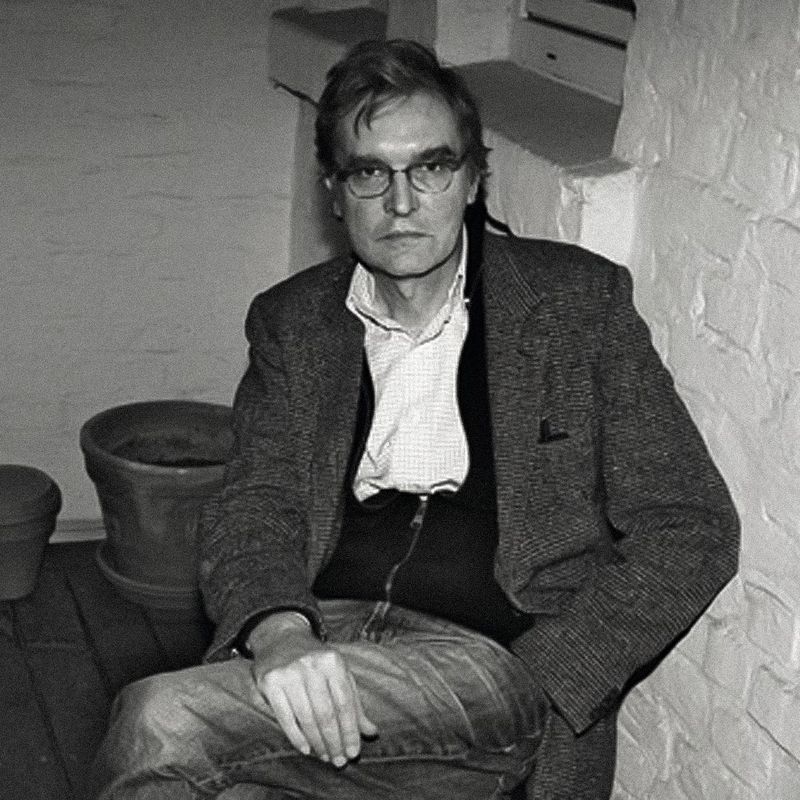Thomas Schütte
“I still think the job of the artist is to tell continuous stories with color, light, lines, form and volume. It is about developing and making work that is independent and convincing.”
Since the late 1970s, Thomas Schütte has been subverting the language of sculpture in uncanny, subtly humorous work that addresses such topics as power, memory, monumentality, and the human condition. Across Schütte’s multifaceted practice, which incorporates architecture, figurative sculpture, public statuary, installations, and drawings, he reconceives classical subjects and reflects on the legacies of modernism.
Born in 1954 in Oldenburg, Germany, Schütte lives and works in Düsseldorf. He studied at the Kunstakademie Düsseldorf (1973–81) under Gerhard Richter, Daniel Buren, and Benjamin Buchloh. Schütte’s earliest work engaged the objective qualities of painting, exploring its functional and decorative aspects in wallpaper and friezes. In the early 1980s, the artist’s inquiry considered the role of sculpture and its relation to culture and the public sphere, exploring display conventions and architectural models. He created scale models of conceptual constructions—villas, “bird hotels,” temples, museums, and tribunes—that consider the practical and symbolic dimensions of architecture. In the mid-1980s, he turned to the figure, seeking to convey “the grammar of the character” as opposed to mere representation of psychological states. His early figures, recalling puppets or marionettes, consider the nature of the human being and the variation of facial expressions. He has since explored the notion of the hero and the relationship between scale and power in expressionistic figures that are often grotesque and caricatured. These include the melancholic and farcical sculptural series United Enemies (1992–), which features theatrical displays in which two figures are bound together, executed in various scales and media.
Major exhibitions of Schütte’s work have appeared at Georg Kolbe Museum, Berlin (2021); Kunsthaus Bregenz, Austria (2019); Monnaie de Paris (2019); Moderna Museet, Stockholm (2016); Fondation Beyeler, Basel (2013); Serpentine Galleries, London (2012); Museo Nacional Centro de Arte Reina Sofía, Madrid (2010); Bundeskunsthalle Bonn, Germany (2010); Haus der Kunst, Munich (2009); Kunstmuseum Winterthur, Switzerland (2003); Dia Art Foundation, New York (1999); and Serralves Foundation, Porto (1998); among many others. He participated in Documenta, Kassel (1987, 1992, 1997) and the 2005 Venice Biennale, where he was awarded the Golden Lion. In 2016, Schütte opened the Skulpturenhalle of the Thomas Schütte Foundation in Neuss, Germany. The most ambitious realization of one of Schütte’s architectural models, the building houses an archive of Schütte’s work and serves as an exhibition space for other sculptors.
Selected Artworks
- Thomas Schütte
- Basler Mask (No. 11), 2014
- Glazed ceramic
- 14³⁄₁₆ × 11¹³⁄₁₆ × 8¹⁄₁₆ inches (36 × 30 × 20.5 cm)
- Thomas Schütte
- Eierkopf, voll, 2014
- Glazed ceramic with wood pedestal
- 50⅜ × 17¹¹⁄₁₆ × 13¾ inches (128 × 45 × 35 cm)
- Thomas Schütte
- Ceramic Sketch, 1999
- Glazed ceramic
- 8¹⁄₁₆ × 17¹¹⁄₁₆ × 11¹³⁄₁₆ inches (20.5 × 45 × 30 cm)
- Thomas Schütte
- United Enemies, 1995
- Fimo, fabric, wood, glass, and PVC
- 73½ × 10 × 10 inches (186.7 × 25.4 × 25.4 cm)
